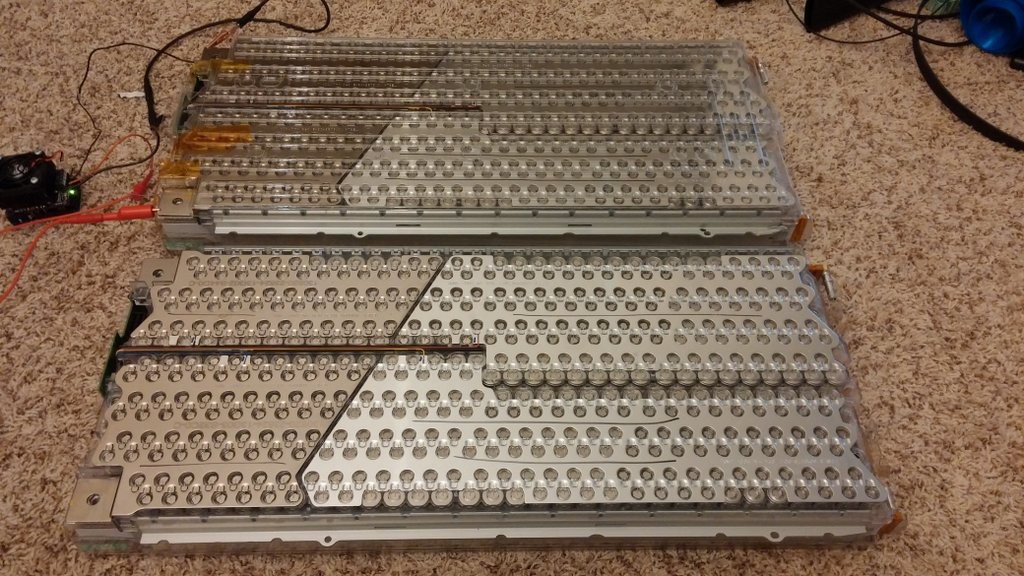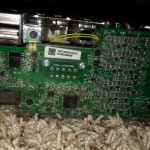Last night, a new member on the EEVBlog forums posted that he had ten battery modules from a Tesla Model S for sale. The asking price? $1,900 each, shipped within the US.
According to the poster, it is a rev b pack from a car with ~4,000 miles on it. Each module has 444 18650 cells, configured as six in series, 74 in parallel (6S74P). Capacity is 233Ah and 5.3 kWh. Each module has its own Tesla BMS (battery management system), and plumbing for heating/cooling.
I also found another thread about the same modules in in a DIY electric vehicle forum. There is more discussion there, including some testing results by one of his collaborators. And here is a thread on another EV forum where the collaborator posted earlier in the month about hunting down the source pack and break down some of the modules into cells for sale.
Doing a little math, this works out to $4.28/cell, $0.12/Ah and $2.78/Wh. Back in November, I came across a Hack-a-Day interview with the first person I know of to publish a Tesla Model S pack teardown. I noted that he’d paid ~$20 for his pack, which worked out to about $3/cell, so, this is ~40% more expensive/unit, but with the advantage of 1/10th the initial outlay.
The cells in these Tesla packs are a variant of the Panasonic NCR18650 cells. The exact variant isn’t known, and is probably Tesla-specific, but there are NCR18650 cells with similar capacity on the market. Like all 18650 Li-ion batteries, any NCR18650 cells available retail, or in smaller wholesale quantities have passed through a few middle-men, making the wholesale prices hard to estimate. What I do know though is that it is hard to find such cells for less than $6.50. Laptop packs with 9 similar cells are over $100 new, though you can generally find surplus packs for $50 or $5.50/cell. With only 4,000 miles on the battery pack, and given that Tesla treats them pretty gently, the cells in these packs are going to be pretty close to new condition.
Given all this, these modules seem like a reasonable price if you can use the entire module intact.
On the other hand, using cells from these packs individually probably doesn’t make sense. In addition to the effort required to disassemble the module, these cells may need to be wrapped. It is also quite possible that these cells don’t have some of the safety features people expect with 18650 cells, since the pack has other provisions for dealing with cell shorts and overheating.
If you buy any of these modules, I’d be interested to hear about your plans for them. If you’ve seen other Tesla modules for sale, I’d appreciate a link, or information about the pricing.





